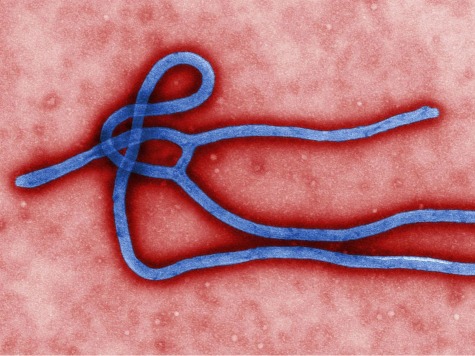
Researchers from Washington University School of Medicine in St. Louis, Icahn School of Medicine at Mount Sinai and the University of Texas Southwestern Medical Center published a report in the Cell Host & Microbe Journal explaining discovered a unique mechanism in the Ebola virus that defeats attempts by the human body’s immune system to block infected cell viral reproduction.
When attacked by a virus, the human body produces interferon that stimulates genes in the virus-infected cells and surrounding tissues to generate antibodies, which signal to the nuclei of other cells to fight replication of infected cells. But viruses such as influenza, hepatitis C and herpes simplex when attacked by antibodies encode mechanisms to counteract the human body’s normal response — and continue infected cell replication.
Researchers found that Ebola (Virus VP24) targets a unique “NLS Binding Site” on a human protein called “Karyopherin Alpha 5 to selectively compete with an antibody called Phosphorylated STAT1 to generate “Ebola Virus Protein 24.” This mechanism stops the interferon-based signals from ramping up immune defenses. With the body’s first response disabled, the virus is free to mass produce itself and often triggers the massive immune response that damages the host victim’s organs.
“Our study is the first to show how Ebola viral protein 24 defeats the signal sent by interferons, the key signaling molecules in the body’s early response to Ebola virus infection,” notes Christopher F. Basler, Ph.D., professor of microbiology at the Icahn School of Medicine at Mount Sinai, and an author of the newly published paper. “These newfound details of Ebola biology are already serving as the foundation of a new drug development effort, albeit in its earliest stages.”
“We’ve known for a long time that infection with Ebola virus obstructs an important arm in our immune system that is activated by interferons,” adds senior author Gaya Amarasinghe, Ph.D., assistant professor of pathology and immunology at the Washington University School of Medicine. “By determining the structure of an eVP24 in complex with a cellular transporter, we learned how Ebola does this.”
In 2006, Dr. Basler and colleagues found that the Ebola virus suppresses the human immune response through VP24, but not how it did so. Through the combination of molecular biology techniques, cell studies, and tests that reveal protein structures, the current team led by Dr. Amarasinghe defined the molecular basis for how eVP24 achieves this suppression. The current study determined the structure of eVP24 when bound to a cellular targeted protein stops signaling and cripples normal immune response.
Understanding exactly how the Ebola virus targets the interferon pathway will guide drug development moving forward. Dr. Basler believes it may be possible to find an antibody or molecule that interferes with eVP24, or that works around its competition for the protein. The new research indicates that treatment of patients with extra interferon, currently used against the hepatitis C virus, may be effective against the Ebola virus.
“We feel the urgency of the present situation, but still must do the careful research to ensure that any early drug candidates against the Ebola virus are proven to be safe, effective, and ready for use in future outbreaks,” says Dr. Basler, who is also the principal Investigator for an NIH-funded Center of Excellence for Translational Research (CETR) focused on developing drugs to treat Ebola virus infections.
The author will respond to readers’ comments.

COMMENTS
Please let us know if you're having issues with commenting.